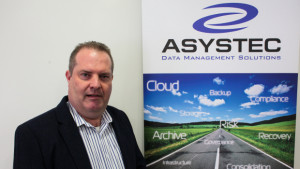Whether you call it big data, data analytics or business intelligence, the fundamental idea behind driving more business value from information built up in an organisation is not new. Many progressive companies are now doing this but anecdotal evidence suggests that many Irish companies are still struggling to grasp what business analytics and big data can actually do for them.
“I don’t think there is a good understanding of analytics out there, if I’m honest. I was with a customer recently, the CIO of a business, and his comment to me was ‘the business is coming to me looking for this analytics stuff.’ So there’s still a certain amount of vagueness around what is analytics, what do we mean by it,” said Robert Lanigan, analytics and information management lead for IBM Ireland.

In my opinion the companies that get it are companies that are digitally oriented and data rich, so that typically means banking, financial organisations, insurance companies and some of the larger medical research organisations that have lots of data to experiment and play with. The traditional hard-core manufacturing companies get it, but not to the same level because the real wins on analytics tend to be in areas where you’ve a lot of customers, Robert Lanigan, IBM
“It’s the same as there was around big data. When we engage our customers rather than using the buzzwords per se, we try to focus on what is it they’re trying to achieve, how can we help them and for some customers, analytics might just mean basic reporting and understanding what has happened in the business, whereas to other customers, analytics might mean forecasting and predicting the best outcomes for them in the future.”
Smaller struggles
Lanigan believes that in the Irish market it is mostly small to medium sized companies that are still struggling with what analytics means, whereas bigger companies such as the larger banks and insurance companies have a better grasp of it. However, there is still a long way to go.
“In my opinion the companies that get it are companies that are digitally oriented and data rich, so that typically means banking, financial organisations, insurance companies and some of the larger medical research organisations that have lots of data to experiment and play with. The traditional hard-core manufacturing companies get it, but not to the same level because the real wins on analytics tend to be in areas where you’ve a lot of customers — things like customer insight, customer profitability, customer cross-sell, up-sell, retention and so on.”
“When you have data in those areas you can get some very quick returns. From a manufacturing perspective, it’s about applying analytics to production processes so that if you’re producing widgets or microchips, you can validate the production process and reduce the time it takes to manufacture and improve the quality.”
Interesting trends
According to Lanigan, there are some interesting trends developing in the field of analytics at the moment, including a growing appetite for experimentation.
“We’re seeing customers asking questions of data that they might not have considered important in the past. They want to see is there any value in it and how can they exploit that. Analytics is not a simple area and there are a lot of different moving parts to it. Customers have been looking at business intelligence reporting for a number of years and some of it’s gone well and some of it hasn’t. For some organisations, it’s been necessary to spend a little bit of money experimenting and the answer hasn’t always been very obvious to begin with.”

In terms of the mathematical models being used, there’s not a lot of new models coming up. What’s new is the capability of being able to store vast levels of detailed information on your customers and detailed information on your products. From a computer science perspective, to be able to run these advanced algorithms on an individual basis for customers or products, across these massive data sets — that just wasn’t achievable before because it was way too expensive to do it, David Clarke, Asystec
Meanwhile, other operators are seeing additional trends emerging, including Dave Clarke, chief data scientist with Asystec.
New models
“In terms of the mathematical models being used, there’s not a lot of new models coming up. What’s new is the capability of being able to store vast levels of detailed information on your customers and detailed information on your products. From a computer science perspective, to be able to run these advanced algorithms on an individual basis for customers or products, across these massive data sets — that just wasn’t achievable before because it was way too expensive to do it,” he said.
“Now with distributed architectures and distributed data platforms with Hadoop infrastructures, you can run these algorithms against vastly increasing amounts of data. You can have a much lower level of granularity to get those predictive and prescriptive analytic insights. There has been an awareness growing of that for a while.”
Clarke suggests that what some companies have struggled with is the analytics industry itself. It has been, he believes, a little confused in how it has gone to the market.
“You don’t have to go to a customer and say ‘you need Hadoop distributive architecture which is going to be 20 servers and 10 gazillion bytes of information and that’s going to cost you a million bucks before you get off the ground.’ The next question is obviously going to be ‘well what’s the return on investment going to be?’ and the answer is ‘you have to spend it first to see and it’s not guaranteed.’ That isn’t the right way to go about it,” he said.
Business led
Asystec pursues a business-led approach to this problem, starting off with a smaller project to assess viability.








Subscribers 0
Fans 0
Followers 0
Followers